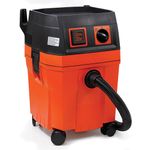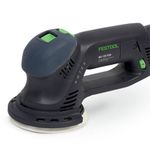Tool Test: Biscuit Joiners
We tested eight machines to see which are best for furniture makers
Synopsis: Increasingly common in woodworking shops, the biscuit joiner is a versatile and easy-to-use tool for numerous jobs, from assembling and attaching face frames to reinforcing miters and building cabinet and drawer boxes. We tested eight machines over several weeks to see which worked best, using them to cut slots for face frames, miters, and cases. Accurate slot-cutting was the most important criteria, but a good fence is also critical. Models tested include the Lamello Classic X, Lamello Top 21, Dewalt DW682K, Craftsman 315.175390, Makita PJ7000, Makita LXJP02, Porter-Cable 557, and Ryobi JM-82.
The biscuit joiner was a relative newcomer in the first cabinet shop where I worked about 30 years ago. Now it’s almost as common as the portable drill in professional and hobbyist woodshops alike, and with good reason. I’ve been using a biscuit joiner daily in my work for years now. It’s a versatile and easy-to-use tool for numerous applications, from assembling and attaching face frames to reinforcing miters, and it’s also great for building cabinet and drawer boxes.
A biscuit joiner is a pretty simple machine. It has a motor and blade, a springloaded plunge mechanism that guides the blade, and a baseplate and fence that locate biscuit slots in the work. Using the tool is a two-handed operation: One hand pushes at the back of the machine to plunge it into the workpiece while the other holds it down at the front end. I worked with eight machines over several weeks to find out which models performed best. I evaluated all the key components to gauge their accuracy, and I used all of the machines to cut slots for face frames, miters (standing and flat), and cases. The most important test was to check the accuracy of the slot-cutting.
Vertical slot alignment is most important
For a biscuit joiner to perform well, it has to cut slots without excessive slop, so the storebought biscuits fit snugly for a good glue joint. One of the keys to getting an accurate slot and good fit from joint to joint is a precise plunge mechanism that slides without play or wobble. You also have to hook up the machine to a vacuum because any debris can interfere with the tool’s alignment and give you sloppy results. Finally, you need a high-quality fence that holds its settings while you cut slots. Problems with any of these can cause serious alignment issues. Although the slots and biscuits are designed with sideways play built in—it doesn’t affect strength and actually comes in handy when assembling parts—slots that are out of parallel will give you headaches.
I tested all the machines using a shopmade hardwood “biscuit” that wouldn’t be as affected as normal biscuits are by moisture changes. I cut slots both with the fence and with the base as the reference surface. Then I inserted the test piece into each slot and measured from end to end with a dial indicator to be sure each slot was parallel with the faces of the board. Except for the Craftsman, all of the machines did well here.
For the full article, download the PDF below:
Fine Woodworking Recommended Products

Fein Turbo II HEPA Wet/Dry Dust Extractor

Festool Rotex FEQ-Plus Random Orbital Sander

Stanley Powerlock 16-ft. tape measure























Log in or create an account to post a comment.
Sign up Log in